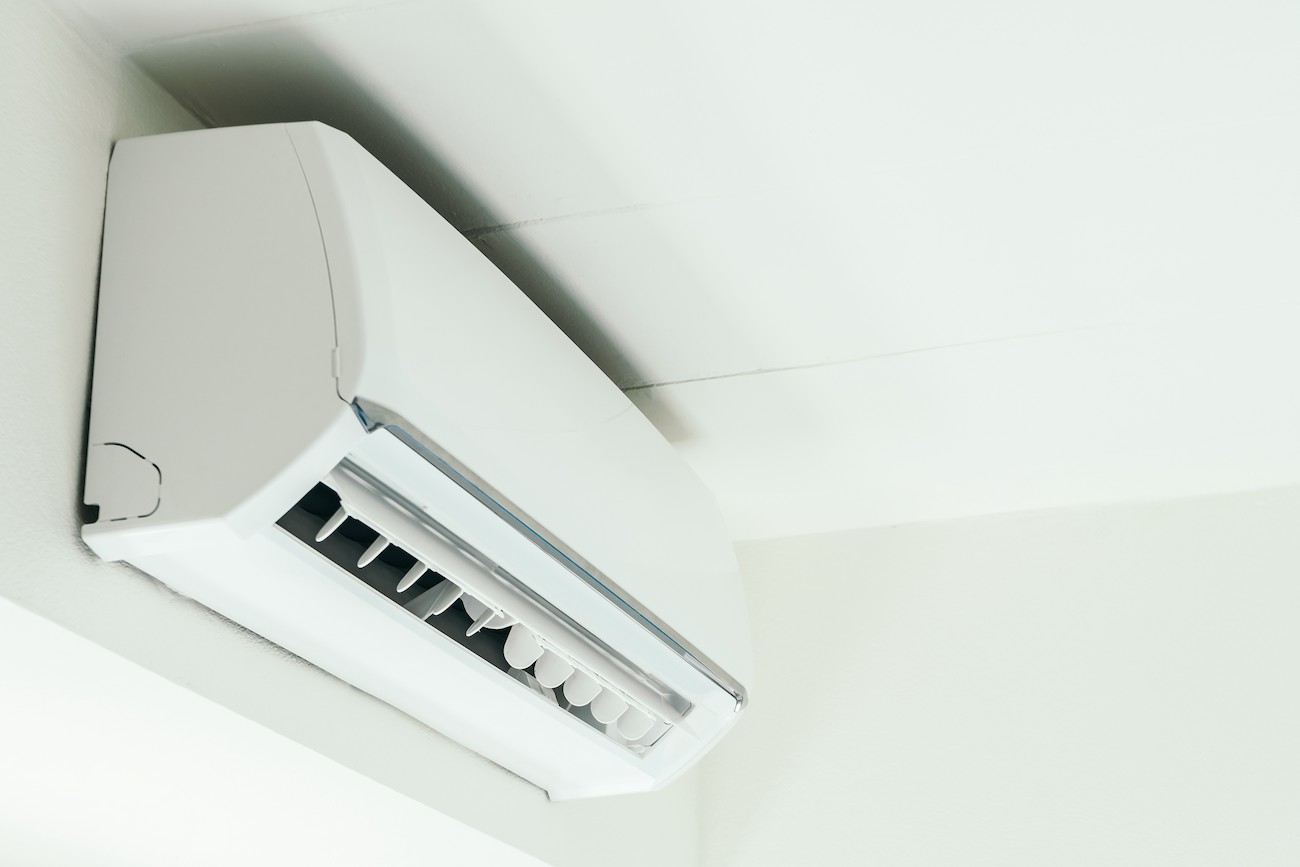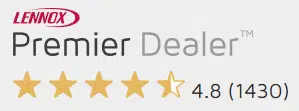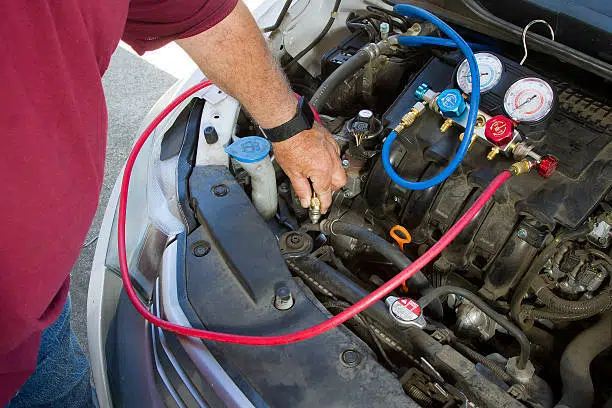
Table of Contents
In the quest for efficient home climate control, SEER (Seasonal Energy Efficiency Ratio) has been a trusty guide. But now, there’s a newer, smarter version in town – SEER2. In this guide, we’ll decode the language of efficiency ratings, uncover the differences between SEER and SEER2, and empower you to make savvy choices for your HVAC system.
What Is a SEER Rating?
A SEER rating, or Seasonal Energy Efficiency Ratio, is a metric used to gauge the efficiency of air conditioning systems. Represented as a numerical value, SEER indicates the cooling output a system provides over a typical cooling season, divided by the total electric energy input. The higher the SEER rating, the more energy-efficient the system.
Within the realm of SEER ratings, critical components discreetly orchestrate the efficiency of your air conditioning system. Picture it as a symphony of behind-the-scenes elements shaping your unit’s performance. The nature of the refrigerant, the efficacy of the compressor, and the proficiency of the fan motor constitute the pivotal characters in this narrative of efficiency.
What Is a SEER2 Rate?
SEER2, the evolutionary successor to the familiar SEER standard, marks a significant advancement in assessing HVAC system efficiency. Unlike its predecessor, SEER2 isn’t content with a broad overview; it delves into the specifics of real-world operation. It factors in dynamic elements such as part-load efficiency and the impact of variable-speed technology, offering a more nuanced and accurate reflection of a system’s energy efficiency under diverse operating conditions.
SEER2 vs. SEER: Key Differences
SEER2 surpasses SEER in its ability to capture the complexity of HVAC system performance. While SEER provides a generalized snapshot, SEER2 goes a step further by considering a broader range of operating conditions. This means it accounts for real-world scenarios, making it a more reliable metric for evaluating efficiency. Whether it’s adapting to variable loads or utilizing advanced technologies, SEER2 sets a new standard for precision, ensuring that the efficiency rating aligns closely with the actual performance of the system.
Aspect | SEER | SEER2 |
|---|---|---|
Scope of Measurement | Provides a general overview of efficiency | Incorporates dynamic factors for a more realistic representation of real-world efficiency under various operating conditions. |
Considered Factors | Primarily focuses on full-load conditions | Factors in part-load efficiency, accounting for a broader range of operating conditions and variable-speed technology. |
Precision in Measurement | Offers a generalized snapshot | Offers a more precise and nuanced measurement, aligning closely with actual system performance in diverse climates. |
Real-world Performance Accuracy | May not accurately reflect actual usage | Provides a more accurate reflection of a system’s energy efficiency under varying loads, ensuring a more realistic representation of real-world performance. |
Adaptability to Technology | Limited consideration of advanced tech | Embraces advancements, making it future-proof by accommodating variable-speed technology and other innovations in HVAC systems. |
Choosing the Right SEER2 Rating
Alright, let’s talk about finding the perfect dance partner for your HVAC system – the ideal SEER2 rating. Think of it as the matchmaking phase but for your home’s comfort. Let’s navigate you through some crucial considerations.
Climate Considerations
Canada’s varied climate demands a tailored approach to SEER2 rating selection. In regions experiencing colder temperatures, finding a balance between effective heating and cooling becomes paramount. Conversely, in warmer areas, a focus on higher cooling efficiency is crucial. Our comprehensive guide provides a detailed breakdown, matching SEER2 ratings with specific climates, ensuring your HVAC system is adept at delivering optimal performance in the face of fluctuating weather conditions.
Cost vs. Efficiency
The decision-making process extends beyond climate considerations to the balancing act between upfront costs and long-term efficiency gains. While higher-rated systems may entail a greater initial investment, the potential for long-term energy savings often tips the scales in their favor. Delve into our insights on the cost-efficiency equilibrium, empowering you to make a well-informed decision that not only aligns with your budget but also reflects your commitment to sustainable, energy-efficient solutions. Consider it an investment in comfort that pays dividends over the life of your HVAC system.
System Compatibility
Beyond the climate, compatibility with your existing HVAC infrastructure is paramount. Assessing how a new SEER2-rated system integrates with your current setup ensures seamless functionality and optimal efficiency. Our guide provides tips on evaluating compatibility factors, from ductwork to control systems, guaranteeing a harmonious integration that maximizes your investment.
Future-Proofing
In the ever-evolving landscape of HVAC technology, future-proofing your investment is wise. Consider the potential for technological advancements and how well your chosen SEER2 rating aligns with emerging industry standards. Our guide sheds light on future-proofing strategies, ensuring your HVAC system remains efficient and relevant for years to come.
Rebates and Incentives
Explore the landscape of available rebates and incentives. Many regions offer financial benefits for choosing high-efficiency HVAC systems. Familiarizing yourself with these programs can significantly offset the upfront costs, making the decision to invest in a higher SEER2-rated system even more financially appealing.
Reach out to HVAC Service Solutions for a piece of professional advice about what SEER rate is better for your home.
So, What Is a Good SEER2 Rating?

Currently, the standard SEER2 ratings for HVAC systems hover around 14.3. However, it’s essential to aim for units with a SEER2 rating above 16 for optimal energy efficiency and substantial cost savings.
For instance, if you’re considering an upgrade from an older unit with a SEER rating of 8, moving to a new unit with a SEER2 rating of 15.3 could result in approximately 50% savings on your energy bill. This significant improvement is not just a number; it translates into a tangible reduction in energy costs and a more environmentally friendly footprint.
Investing in a higher SEER2-rated system not only ensures better performance but also aligns with modern energy standards, contributing to a more sustainable and cost-effective home.
Conclusion
In the realm of HVAC efficiency, SEER2 shines as the benchmark for precision and sustainability. Upgrading to a higher SEER2-rated system isn’t just an investment in energy savings; it’s a commitment to a greener and more efficient home.
Ready to make the switch? Contact HVAC Service Solutions for expert guidance tailored to your needs. Elevate your home comfort – contact us today via the link below.
Frequent Asked Questions
How does SEER2 differ from SEER?
SEER2 stands for Seasonal Energy Efficiency Ratio 2. It differs from SEER by incorporating dynamic factors like part-load efficiency and variable-speed technology, offering a more precise reflection of real-world HVAC system efficiency.
What is a good SEER2 rating for my HVAC system?
A good SEER2 rating depends on your climate. In colder regions, aim for 18 or higher, while moderate and warmer regions can benefit from ratings ranging from 16 to 14, respectively.
How do SEER and SEER2 impact energy costs?
Units with higher SEER and SEER2 ratings generally have lower energy costs, translating into significant long-term energy savings for homeowners.
Is it worth upgrading from an older unit with a low SEER rating to a higher SEER2 unit?
Absolutely. Upgrading from an older unit with a low SEER rating, say 8, to a SEER2 rating of 15.3 or higher could save you roughly 50% on your energy bills.
What factors should I consider when choosing the right SEER2 rating for my climate?
Consider the temperature extremes in your region. In colder areas, prioritize a balance between heating and cooling efficiency; in warmer regions, emphasize higher cooling efficiency.
Are there incentives for choosing a higher SEER2-rated system?
Many regions offer incentives, such as energy rebates and grants, for choosing high-efficiency HVAC systems. Find out how you can save up to $10,000 on your new HVAC system with government rebates in Ontario via the link below.
https://thehvacservice.ca/how-to-save-money-with-hvac-government-rebates-in-ontario/
Can I install a higher SEER2-rated system with an older HVAC setup?
While it’s possible, it’s advisable to evaluate compatibility. Consulting with HVAC professionals ensures seamless integration and optimal efficiency. Reach out to HVAC Service Solutions, and we’ll be happy to help you.
Share



















